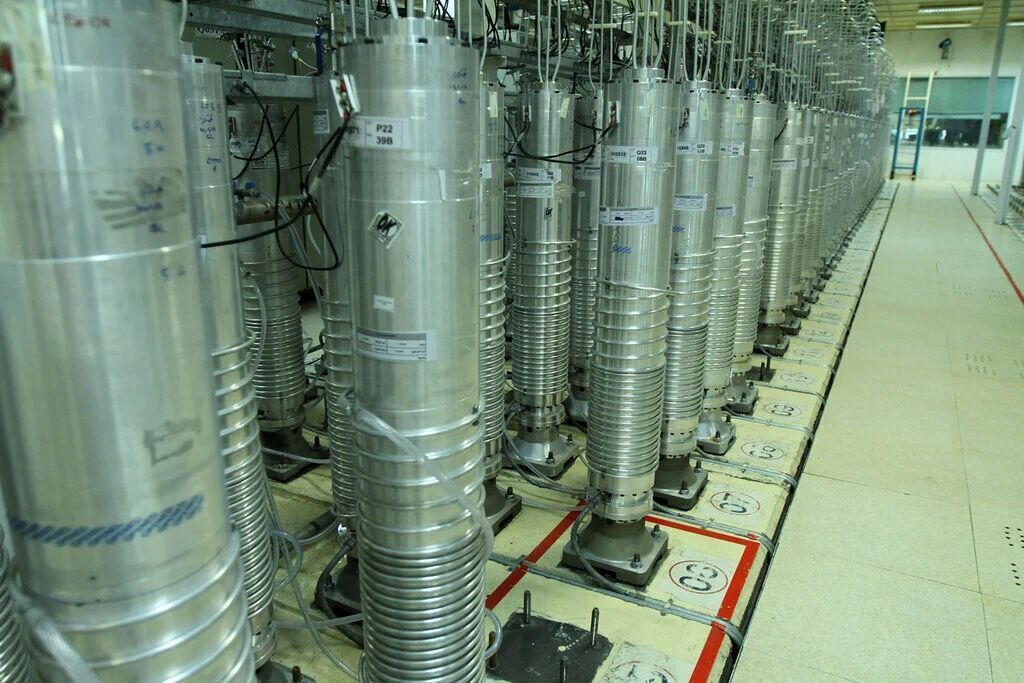Good thread on this stuff:
There is no question that Iran’s nuclear program sustained enormous damage as a result of this 12 day war.
It’s very likely been set back by at least a year, likely more.
But how quickly Iran can race to a (deliverable) bomb depends on one key question ![]()
A good way to think about Iranian nuclear program is that it has 5 key parts:
- Weaponization research - work on assembly of the weapon from its components and making it small enough to fit on a missile.
US IC believes this had been put on ice in 2003 but some facilities, research work and, of course, the scientists with the knowledge have remained. 
-
Uranium enrichment facilities - facilities with the centrifuge cascades setup to enrich uranium up to 90% weapons grade level.

-
Centrifuge manufacturing facilities - plants that can build large number of centrifuges to be used for enrichment.

-
Auxiliary facilities, such as plants where uranium yellowcake can be converted into hexafluoride gas for enrichment and conversion facilities to take the enriched uranium and turn it into metal that can shaped into a sphere for a bomb.

-
Stockpile of already 60% enriched uranium that can be within a couple of weeks be enriched to
90% level.
First part - the weaponization research suffered very heavy blows. Hard to estimate how much because it was always covert and unaccounted for but numerous key scientists have been killed and Parchin, where much of this work had been done, was hit multiple times. 
Thus, even if Iran had all the ingredients for a bomb today, it would likely take it some months before it could be assembled and put on a missile.
Second part - enrichment facilities at Fordow and Natanz were hit by US Massive Ordinance Penetrators (and Israeli strikes at Natanz before that).
While the facility at Fordow may or may not be recoverable, the sensitive centrifuges inside almost certainly suffered heavy damage.
Thus, it is unlikely that Iran can use these facilities to enrich in the coming months.
BUT Iran announced right before the war that it had built a new secret enrichment facility that it refused to disclose.
**Iran to launch new enrichment center at ‘a secure location’**TABNAK, Jun. 12 - The IAEA resolution comes as Iran and the U.S. have been negotiating since April to reach a new agreement over Iran’s nuclear program.https://www.tabnak.ir/en/news/6516/iran-to-launch-new-enrichment-center-at-a-secure-location
Thus, if Iran already has centrifuges deployed at this new facility or can deploy new ones there quickly, it can once again start enriching existing uranium gas fairly quickly.
Third part - centrifuge manufacturing facilities. The Isfahan facility was destroyed but the largest one at Natanz is buried so deep in the mountain that even MOPs can’t destroy it. It was not hit in this war.
It’s hard to say how much of the supply chain for this Natanz centrifuge manufacturing facility was targeted but it’s likely that Iran can still produce centrifuges or can resume that production relatively quickly at Natanz.
Fourth part - auxiliary facilities for conversion of uranium. Those all have been destroyed.
So IF Iran has to start enrichment from scratch using their new secret facility, it will still likely take a year or more to rebuild those plants and enrich uranium up to 90%.
Fifth part - IAEA said that before the war, Iran had accumulated the stockpile of 408kg of 60% enriched uranium that was likely stored in the tunnels at Isfahan.
The reason this is key is that this material can be enriched within a few weeks to 90% - enough for ~9 bombs.
Israelis apparently believe this material was not moved and is buried at Isfahan (tunnel entrances had been hit) and that it may or may not be recoverable.
Thus, the question about the timeline for reconstitution of Iran’s program hinges on whether Iran can take possession of those 408kg 60% HEU.
If it can, it likely has enough enrichment capability to get to 90% quickly.
Even then, Iran still has to rebuild the conversion facility to turn that 60% HEU into a metal sphere and assemble a small enough weapon to put on a missile - all of that will take many months.
But if Iran CAN’T get that 408kg of 60% HEU back, starting enrichment from scratch, rebuilding auxiliary conversion facilities and weaponizing will likely take a year or much longer.
Lastly, as Iran starts thinking about digging up that 60% HEU and rebuilding its program, it now has to contend with the almost certain possibility that Israel and/or the United States will strike it again as those efforts begin in earnest.
Knowing that Israel (and the US) have now crossed the Rubicon and normalized strikes against Iranian nuclear facilities, as well as established air supremacy over Iranian skies, will likely make Khamanei think twice about initiating rapid rebuilding.
At a minimum, Iran will likely have to reacquire/rebuild its air defenses before it embarks on a nuclear rebuild.
Russia likely doesn’t have any S-300s or other AD systems to spare.
China would be happy to sell their AD systems to Iran but those will also take time to acquire/setup - assuming Israel doesn’t destroy them first.
Thus, the true timeline of Iran acquiring a nuke is almost certainly a year+ out even IF they make a decision to make a run for it.
